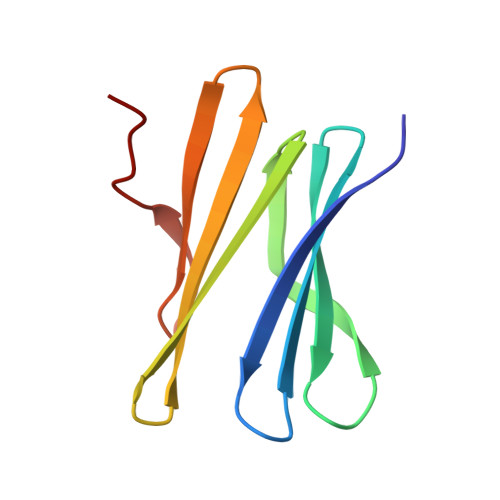Protein Frameworks with Thiacalixarene and Zinc.
Flood, R.J., Ramberg, K.O., Mengel, D.B., Guagnini, F., Crowley, P.B.(2022) Cryst Growth Des 22: 3271-3276
- PubMed: 35529063
- DOI: https://doi.org/10.1021/acs.cgd.2c00108
- Primary Citation of Related Structures:
7PR2, 7PR3, 7PR4, 7PR5 - PubMed Abstract:
Controlled protein assembly provides a means to generate biomaterials. Synthetic macrocycles such as the water-soluble sulfonato-calix[n]arenes are useful mediators of protein assembly. Sulfonato-thiacalix[4]arene ( tsclx 4 ), with its metal-binding capacity, affords the potential for simultaneous macrocycle- and metal-mediated protein assembly. Here, we describe the tsclx 4 -/Zn-directed assembly of two proteins: cationic ¦Á-helical cytochrome c (cyt c ) and neutral ¦Â-propeller Ralstonia solanacearum lectin (RSL). Two co-crystal forms were obtained with cyt c , each involving multinuclear zinc sites supported by the cone conformation of tsclx 4 . The tsclx 4 /Zn cluster acted as an assembly node via both lysine encapsulation and metal-mediated protein-protein contacts. In the case of RSL, tsclx 4 adopted the 1,2-alternate conformation and supported a dinuclear zinc site with concomitant encapsulation and metal-binding of two histidine side chains. These results, together with the knowledge of thiacalixarene/metal nanoclusters, suggest promising applications for thiacalixarenes in biomaterials and MOF fabrication.
Organizational Affiliation:
SSPC, Science Foundation Ireland Research Centre for Pharmaceuticals, School of Biological and Chemical Sciences, National University of Ireland Galway, University Road, Galway H91 TK33, Ireland.


















